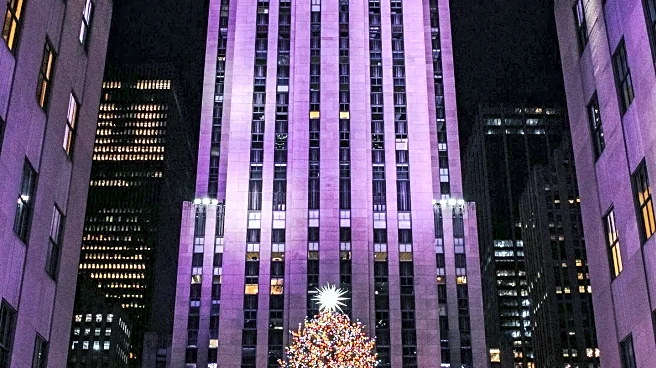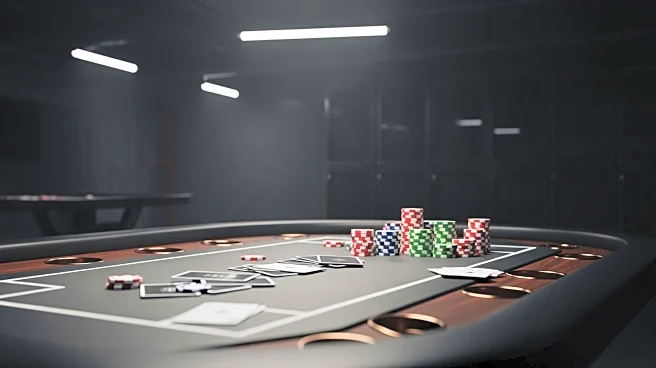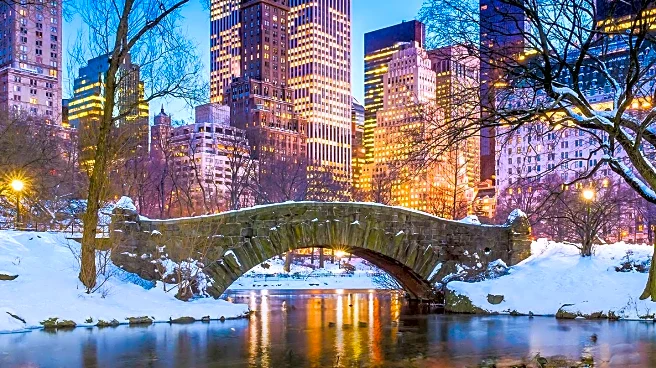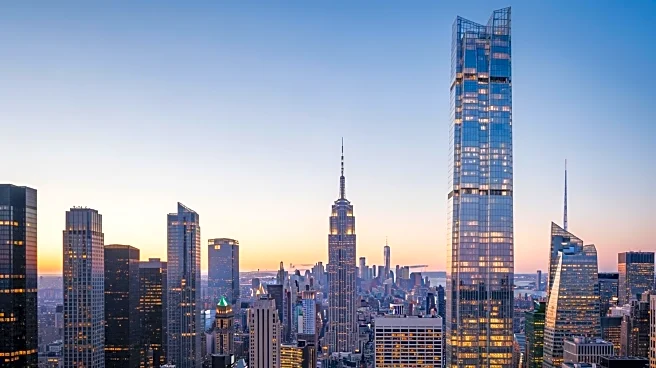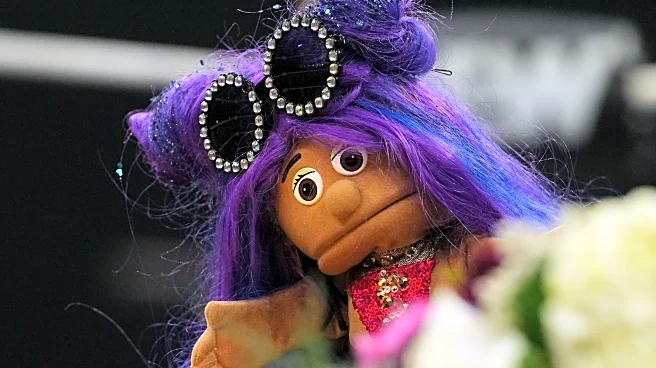What's Happening?
The Rockefeller Center has announced the selection of its 2025 Christmas tree, a significant annual tradition in New York City. This year's tree is an 11-ton Norway Spruce, standing 75 feet tall and 45
feet wide, sourced from East Greenbush, New York. The tree, estimated to be around 75 years old, is donated by the Russ family. It will be cut down on November 6 and transported approximately 130 miles to Manhattan, arriving on November 8. Once in place, the tree will be adorned with over 50,000 multi-colored LED lights and topped with a 9-foot, 900-pound Swarovski star. The official tree lighting ceremony is scheduled for December 3 at 7 p.m. ET, and will be broadcast live on NBC's 'Christmas in Rockefeller Center'.
Why It's Important?
The Rockefeller Center Christmas tree lighting is a cherished tradition that marks the beginning of the holiday season in New York City, attracting tourists and locals alike. This event not only boosts local tourism and economy but also serves as a symbol of holiday spirit and community. The use of energy-efficient LED lights since 2007 highlights a commitment to sustainability, reducing energy consumption significantly. The tree's transformation into lumber for Habitat for Humanity after the holidays underscores a dedication to social responsibility and environmental consciousness.
What's Next?
Following its arrival and decoration, the tree will be the centerpiece of various holiday activities at Rockefeller Center. The lighting ceremony will likely draw significant media attention and public attendance, both in-person and virtually. Post-holiday, the tree will be repurposed into lumber for Habitat for Humanity, continuing a tradition of giving back to the community. This sustainable practice may inspire other large-scale events to adopt similar environmentally friendly measures.
Beyond the Headlines
The Rockefeller Center Christmas tree lighting has evolved from a simple gathering of construction workers in 1931 to a major televised event, reflecting broader cultural shifts towards commercialization and media influence in holiday traditions. The event's history, including its wartime symbolism and international contributions, highlights its role as a cultural touchstone that adapts to contemporary values while maintaining its historical roots.
